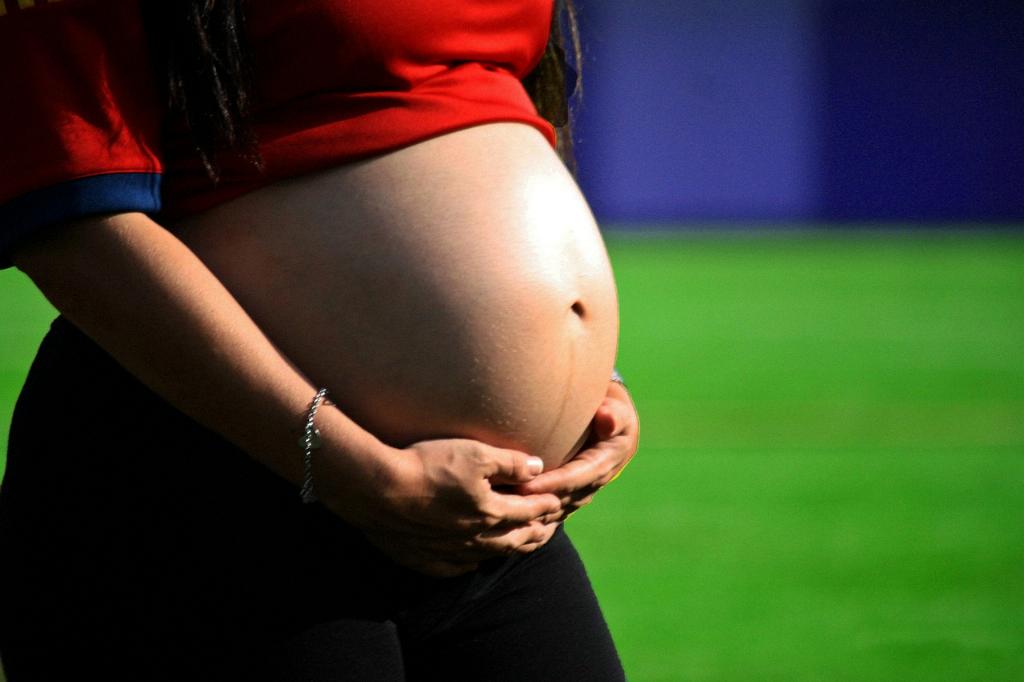Many women wonder about the potential risks and implications of getting pregnant after having had a Cesarean section (C-section) during a previous childbirth. It is essential to understand that every pregnancy is unique, and each woman’s body responds differently to the various challenges and changes that come with carrying a child. If you find yourself in this situation, it is crucial to consult with your healthcare provider to develop a personalized plan for prenatal care and delivery.
One of the primary concerns for women who have had a C-section in the past is the increased risk of uterine rupture during a subsequent pregnancy. Uterine rupture is a rare but serious complication where the scar from the previous C-section tears open during labor. This can lead to severe bleeding, potential harm to the baby, and may necessitate an emergency C-section to ensure the safety of both the mother and the child.
Timing plays a critical role in the decision to conceive after a C-section. Healthcare professionals often recommend waiting 18-24 months before attempting to get pregnant again. This period allows for adequate healing of the uterine incision, reducing the risk of complications during a subsequent pregnancy. However, it is essential to note that each woman’s situation is unique, and consulting with your doctor is paramount to assess your individual circumstances.
When a woman becomes pregnant after a C-section, she may encounter various physical and emotional challenges throughout the pregnancy. The body has already undergone significant changes during the previous C-section, and the added stress of pregnancy can exacerbate certain symptoms. Additionally, women may experience heightened anxiety and concerns about the potential risks associated with their current pregnancy, adding to the overall emotional strain.
Proper prenatal care is crucial for women who are pregnant after a C-section. Regular check-ups, monitoring of the uterine scar, and ongoing communication with your healthcare provider are essential to ensure a healthy pregnancy and safe delivery. Your doctor may recommend additional tests or ultrasounds to assess the integrity of the uterine scar and monitor the baby’s growth and development throughout the pregnancy.
During labor, women who have had a previous C-section may be candidates for a vaginal birth after cesarean (VBAC) under certain conditions. VBAC can be a safe option for many women, allowing them to experience a vaginal delivery after a previous C-section. However, it is essential to discuss the risks and benefits of VBAC with your healthcare provider, as not all women may be suitable candidates for this type of delivery.
In some cases, women who have had multiple C-sections may face additional challenges during subsequent pregnancies. The risk of complications, such as placenta previa or placenta accreta, may increase with each subsequent C-section. These conditions can pose serious risks to both the mother and the baby and may necessitate early delivery or specialized medical care to address potential complications.
Emotionally, women who are pregnant after a C-section may experience a range of feelings, including fear, anxiety, and uncertainty. The physical and emotional toll of a previous C-section can linger, impacting a woman’s mental well-being during the subsequent pregnancy. It is essential to seek support from loved ones, healthcare providers, or mental health professionals if you are struggling with anxiety or emotional distress during your pregnancy.
Support systems are vital for women who are pregnant after a C-section. Having a strong network of family, friends, and healthcare providers can help alleviate some of the stresses and anxieties that come with a subsequent pregnancy. Open communication with your partner, healthcare team, and support network can provide reassurance and guidance throughout the prenatal and delivery process.
If a woman decides to pursue a vaginal birth after a C-section, it is crucial to be aware of the signs of uterine rupture during labor. Symptoms of uterine rupture may include severe abdominal pain, abnormal fetal heart rate patterns, and sudden changes in maternal vital signs. If these symptoms arise, immediate medical intervention is necessary to protect the health and safety of both the mother and the baby.
Ultimately, the decision to become pregnant after a C-section is a personal one that should be made in consultation with your healthcare provider. Understanding the potential risks and challenges associated with a subsequent pregnancy is essential for making informed decisions about your reproductive health. By seeking appropriate prenatal care, maintaining open communication with your healthcare team, and prioritizing your physical and emotional well-being, you can navigate the complexities of pregnancy after a C-section with confidence and support.
In conclusion, getting pregnant after a C-section carries certain risks and challenges that require careful consideration and personalized care. By working closely with your healthcare provider, staying informed about your options, and prioritizing your well-being throughout the pregnancy and delivery process, you can successfully navigate the journey of pregnancy after a C-section with confidence and support.

